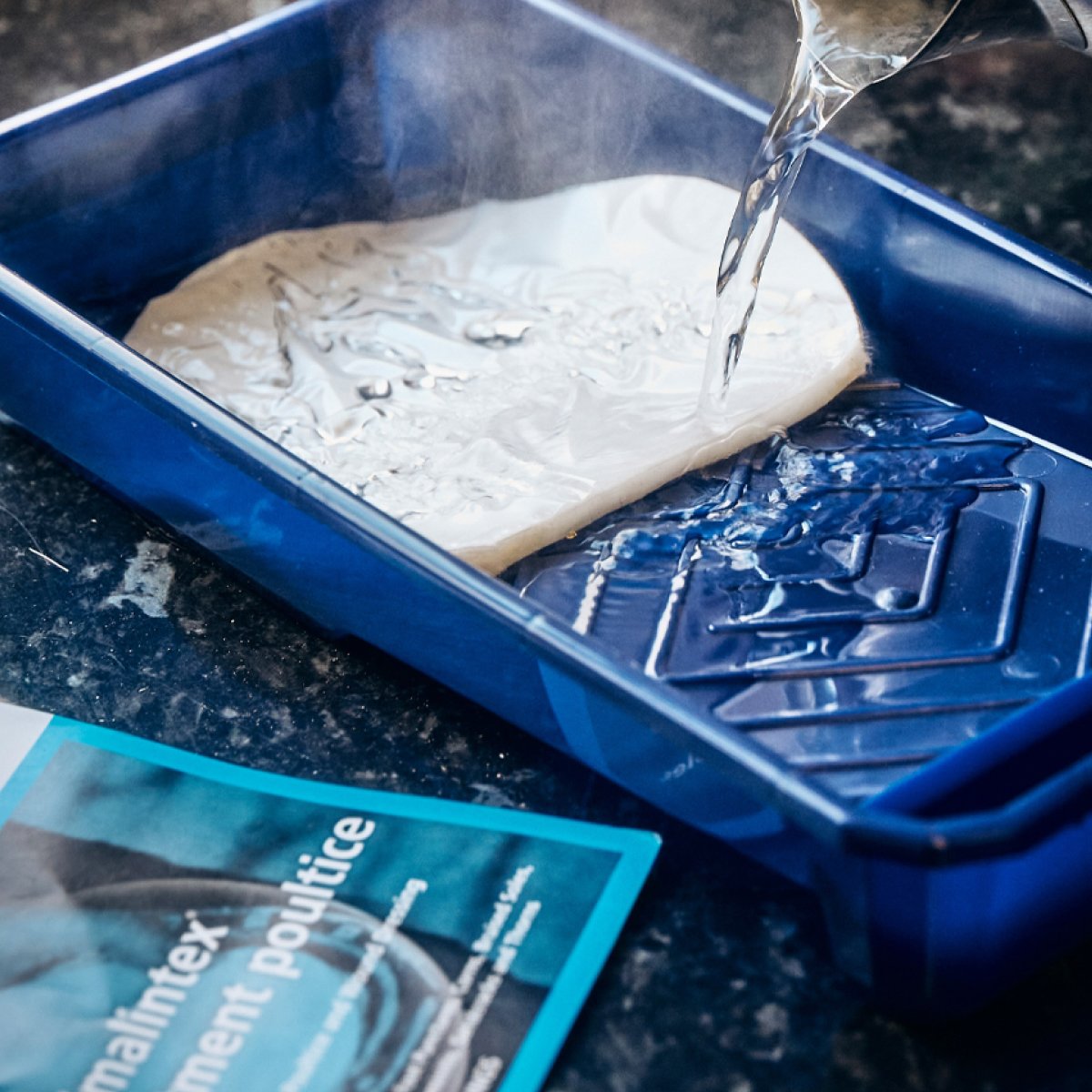



Animalintex® is the original veterinary poultice, made to a proven formula and authorised by the Veterinary Medicines Directorate (VMD).
Suitable for horses and dogs, Animalintex® products are fully licensed by the Veterinary Medicines Doctorate, the UK authority responsible for the safety of veterinary medicinal products. Have complete peace of mind that you are choosing the best products for the animals you love.
The Animalintex® dressing contains Boric Acid BP, an active ingredient which promotes effective healing plus tragacanth, a natural poulticing agent that draws infection out of the wound.
Unlicensed products are not only illegal, but potentially dangerous for your horse. Animalintex® is a well-known, respected, and trusted product which is fully licensed and highly effective.
A range of conditions can be treated using Animalintex®. It is ideal for the treatment of infection wounds, open wounds, mud fever, laminitis, abscesses, thrush, seedy toe, sprains, and bruises.

Why is Animalintex® best for your horse?
Boric Acid Antiseptic
Minimises infection and reinfection and promotes faster healing.
Polythene Backing Cover
Keeps out external contamination and keeps in moisture and warmth, promoting faster healing.
Tragacanth
Natural poulticing agent, draws out dirt and infection, and reduces inflammation as well as creating a moist, clean healing environment.
Economical to Use
Cut to size so there is no waste.
Medicated Cotton Wool
Absorbs pus and holds infected secretions away from body, creating a cleaner wound environment.
Regulated Instructions for Use
The instructions supplied with Animalintex® should be followed carefully as these are regulated by the VMD.



Using Animalintex®
Animalintex® can be applied as a hot, wet poultice or a cold, wet poultice or even as a dry wound dressing - particularly in a first aid situation. The technique used will depend on the particular condition to be treated.
Hot, wet poultice is used for:
Abcesses/Corns/Cracked Heels/Infection Wounds/Laminitis/Mud Fever/Punctured Foot/Seedy Toe/Thorns
Cold, wet poulticing is used for:
Bruising/Capped Elbow/Capped Hock/Sore Shins/Sprains/Strains/Splints
How to prepare a poultice
To prepare a poultice, boil water and allow it to cool to 38 degrees, immerse the poultice and squeeze out excess water. Note that if infected pus is present, the poultice needs to be damp (not wet) so that the pus is absorbed into the poultice. If a cold, wet poultice is to be used, follow the same procedure as above but simply allow the boiled water to cool before application. The poultice is applied to the horse after cleansing and drying the affected area and then secured with a bandage or poultice boot.
The poultice should be changed at least every 12 hours, and the progress of the ailment can be checked at the same time. If the horse does not respond to treatment or is showing signs of distress, please call your vet.